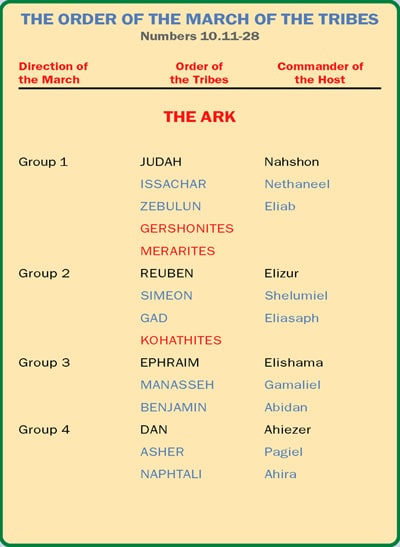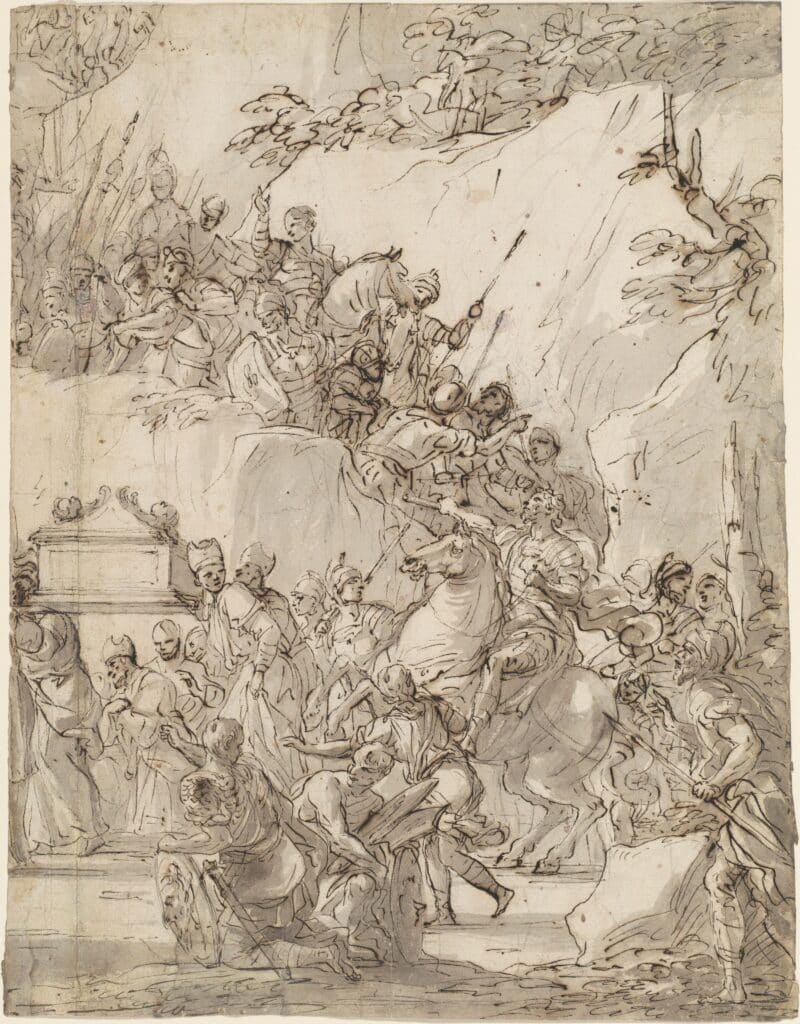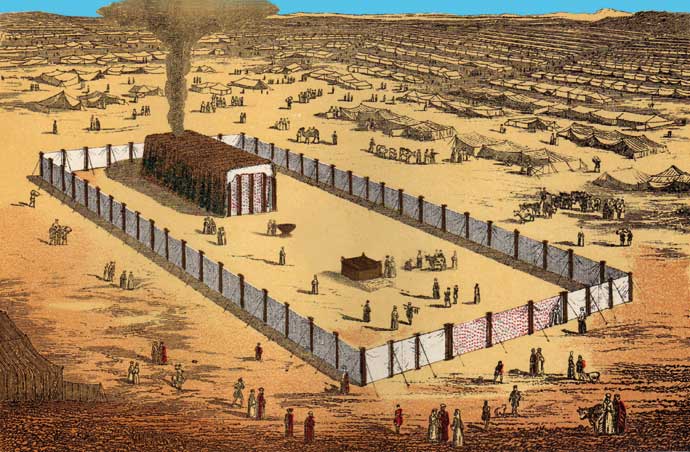It’s hard for us to imagine just how holy and sacred the furnishings of the Tabernacle were. Many of us have been raised in families where we understand that no physical material object has any inherent spiritual value or any special sacredness – apart from the Word of God itself. A baptismal tank in a local church is just that – a tank to contain water where believers in Christ are baptized. Special gloves are not required to touch it nor is whispering and quietly tiptoeing around it required. Even the bread that’s used at the Lord’s Supper – is a symbol only. It’s not sacred itself. It can be disposed of afterwards or fed to the birds. Our worship is totally spiritual in nature – the tangibles and untouchables came to an end in Christ Himself. That’s so evident as you read the Epistle to the Hebrews. Having said that – our spiritual activities should never be irreverent. We must remember that our God is Holy and He expects holiness in our lives and respect in our approach to Him.

But in the Old Testament, the very objects themselves seemed to be wrapped in holiness because of what they represented. For example, when Uzzah attempted to steady the Ark of the Covenant with his hands in 2 Samuel 6, he instantly died. Why? Because God said this in Numbers 4:15: “… when the camp is set to go, then the sons of Kohath shall come to carry them; but they shall not touch any holy thing, lest they die.”
In earlier lessons, we learned that the Tabernacle was like a mobile, transportable worship center. It had to travel. In later centuries, the tent structure was replaced by the Temple in Jerusalem, and the furniture was transferred into the Temple. During the ‘mobile’ years, very exact and explicit instructions were given as to how all the components were to be transported. The Ark of the Covenant was the apex of the entire tabernacle.
“This is the work of the descendants of Kohath in the tent of meeting, concerning the most holy things. “When the camp sets out, Aaron and his sons shall go in and they shall take down the veil of the screen and cover the ark of the testimony with it; and they shall lay a covering of porpoise skin on it, and shall spread over it a cloth of pure blue, and shall insert its poles.” Numbers 4:4-6 NASB
Most of the tabernacle furniture, when being transported, was to be covered by weather-resistant skin. It’s not clear whether that was leather goat skin or the skin of an animal like a badger, or the hide of a sea animal. The point is – it must be a water and weather-resistant shield for the furniture. But take a closer look at all the furniture ready to travel – there is one that’s totally covered by a blue blanket.

Look at the twelve tribes ready to travel to their next destination. The procession looked like this: six tribes at the front and six tribes at the back. The ‘packed’ tabernacle, being carried by the Levites, was strategically located smack-dab in the middle.
“Then the Tabernacle, carried by the Levites, will set out from the middle of the camp. All the tribes are to travel in the same order that they camp, each in position under the appropriate
family banner.” Numbers 2:17 NLT
We don’t know whether there were any non-Israeli Bedouin shepherds in the wilderness or even travellers who saw the massive ‘tribal’ convoy of millions passing by. But for the most part, other than the sheer size, there would have been nothing eye-catching or spectacular to see. Scan the middle section of the convoy. Yes, obviously, a lot of things were being carried – but they were covered with heavy dark leather – with one exception.
One container, with its gold-plated carrying poles resting on the shoulders of the Kohathites (Numbers 10:21), was draped in pure blue. Very distinctive and unique – eye-catching. Christ is still the only thing [One] attractive to our eyes. But for a second, think of God looking down on that convoy travelling through the desert.
“The only thing attractive to the eye of God was the cloth of blue and the ark which it covered. God has found everything in His Son. His movements here on earth were marked by beauty to the eye of His Father and should be a source of wonder to us.” (1)

Nicola Malinconico – The Transport of the Ark of the Covenant c. 1690 Italy Drawing. Based on this lesson, you may want to reflect on the artist’s imagination.
As you read through the Old Testament, trace the travels and the triumphs of the ark. When it arrived at the Jordan River, the waters separated, and the convoy walked across the Jordan (Joshua 3,4). The walls of Jericho fell-down flat (Joshua 6). After two defeats and great losses, Phineas the priest stood before the ark to receive counsel from God regarding a third attempt and victory was achieved (Judges 20:27-28) Dead idols toppled and fell in tribute to the reality and the superiority of the Only True God (1Samuel 5:3). Pagan nations were filled with fear before the ark of the God of all the earth (1Samuel 4 and 6). Curious men looked inside it, and they died (1 Samuel 6). Yes, Uzzah died for touching it (1 Samuel 6).
“Invincible, awesome and triumphant – the Ark moved in triumph before its foes.” (2)
Collect now some sweet thoughts as you think of a few contrasts seen in Christ. Godless men bowed their knees in mockery before Christ. They didn’t fall down dead – they bent their own knees in mockery. Those who touched Him with their fists and their spit did not instantly die from a wrathful stroke from God. Herod’s curiosity in wanting to see Jesus perform some miracle did not bring about swift judgment from God. Our blessed Saviour, on His first visit to our planet, came in grace to bring salvation to us.
He allowed Himself to be taken and treated with cruelty and malice, and yet Heaven was silent. (3)
With one more lesson in this study, remember our focus has been to see and appreciate the colourful beauties of Christ through the prism of the ancient Jewish Tabernacle. Lord willing, next week, we will conclude this series with the pure and solid gold lid of the Ark of the Covenant – the Mercy Seat.
Sources:
- Monday Meditations, Dr. A. J. Higgins
- ibid
- ibid

